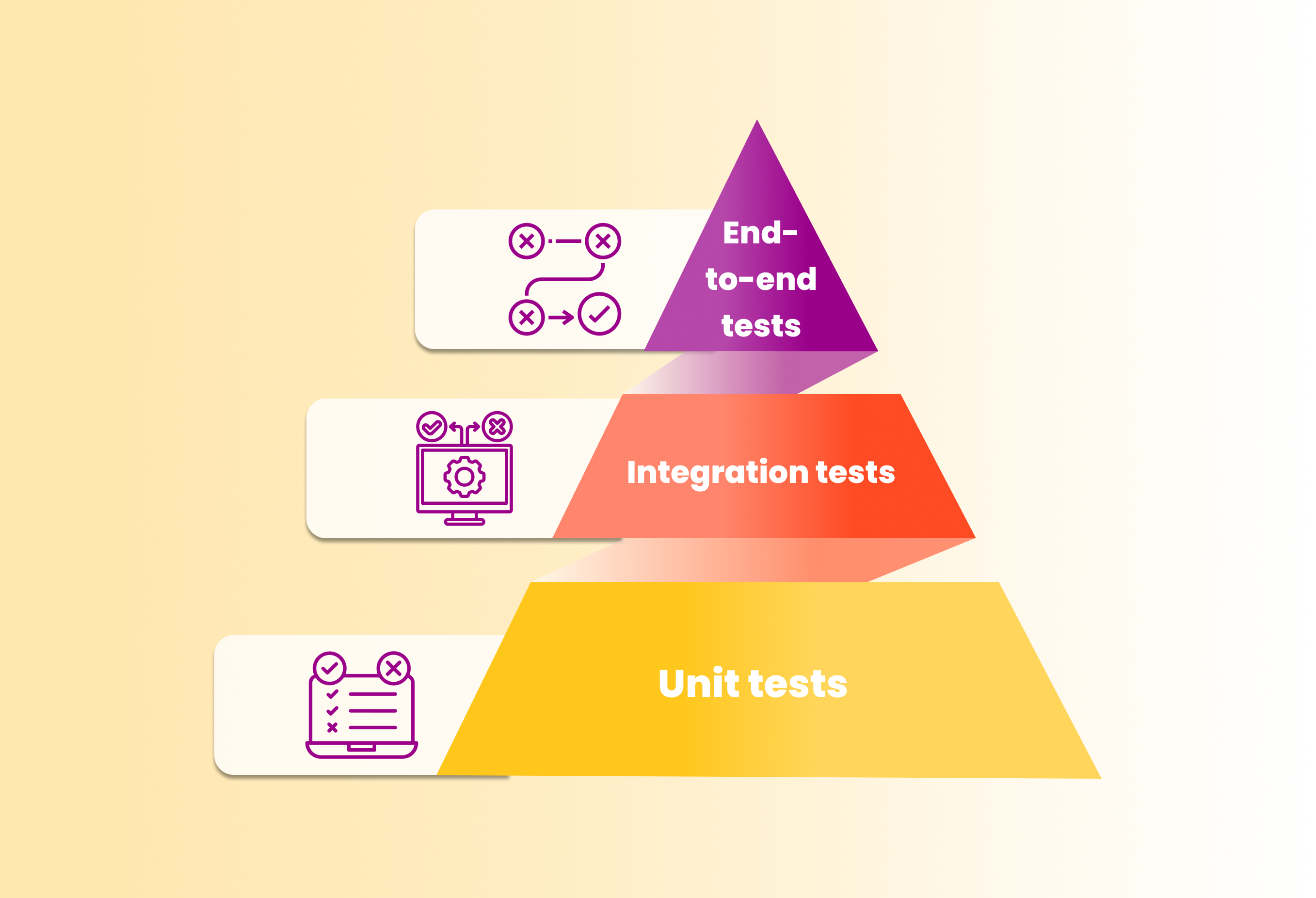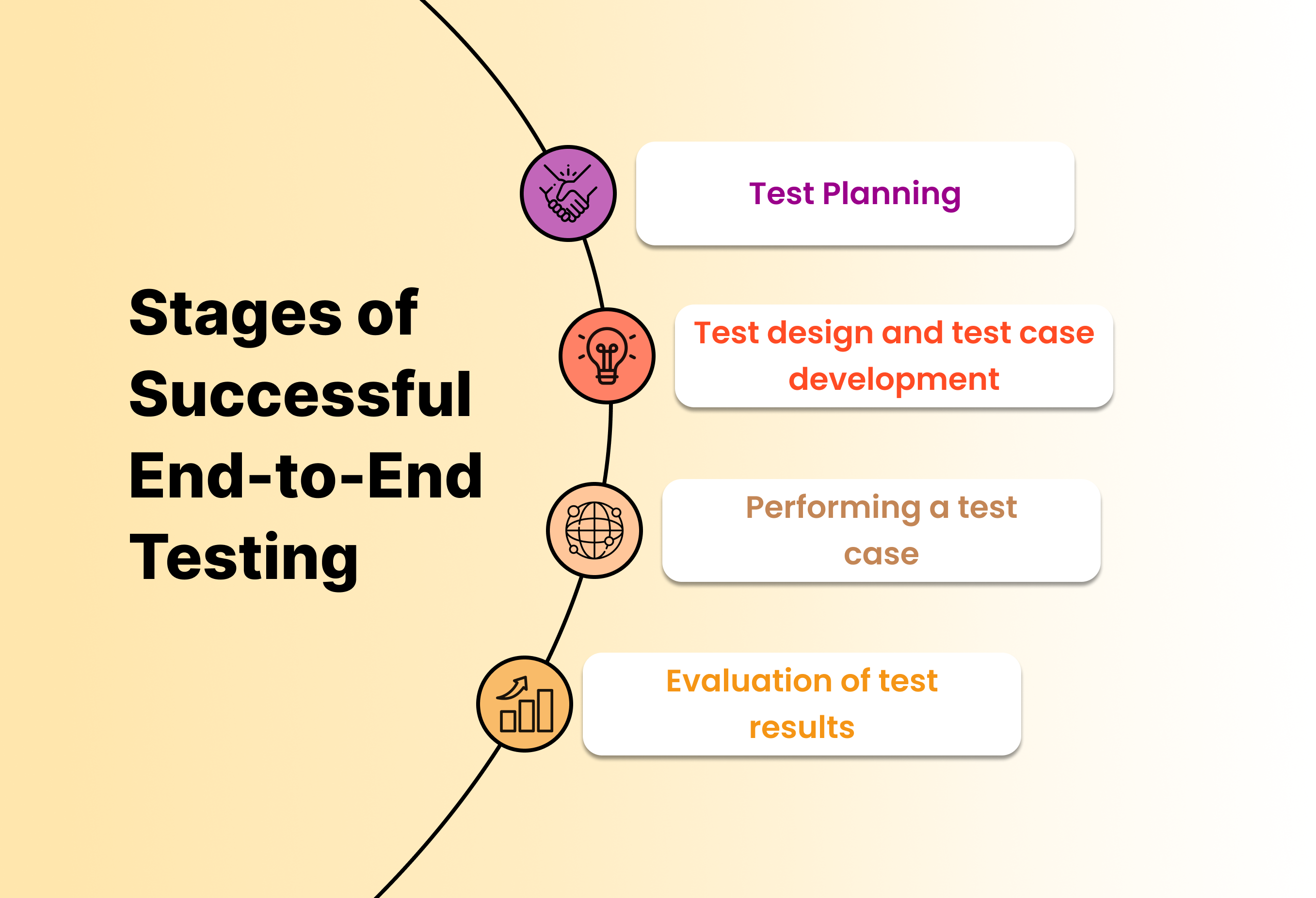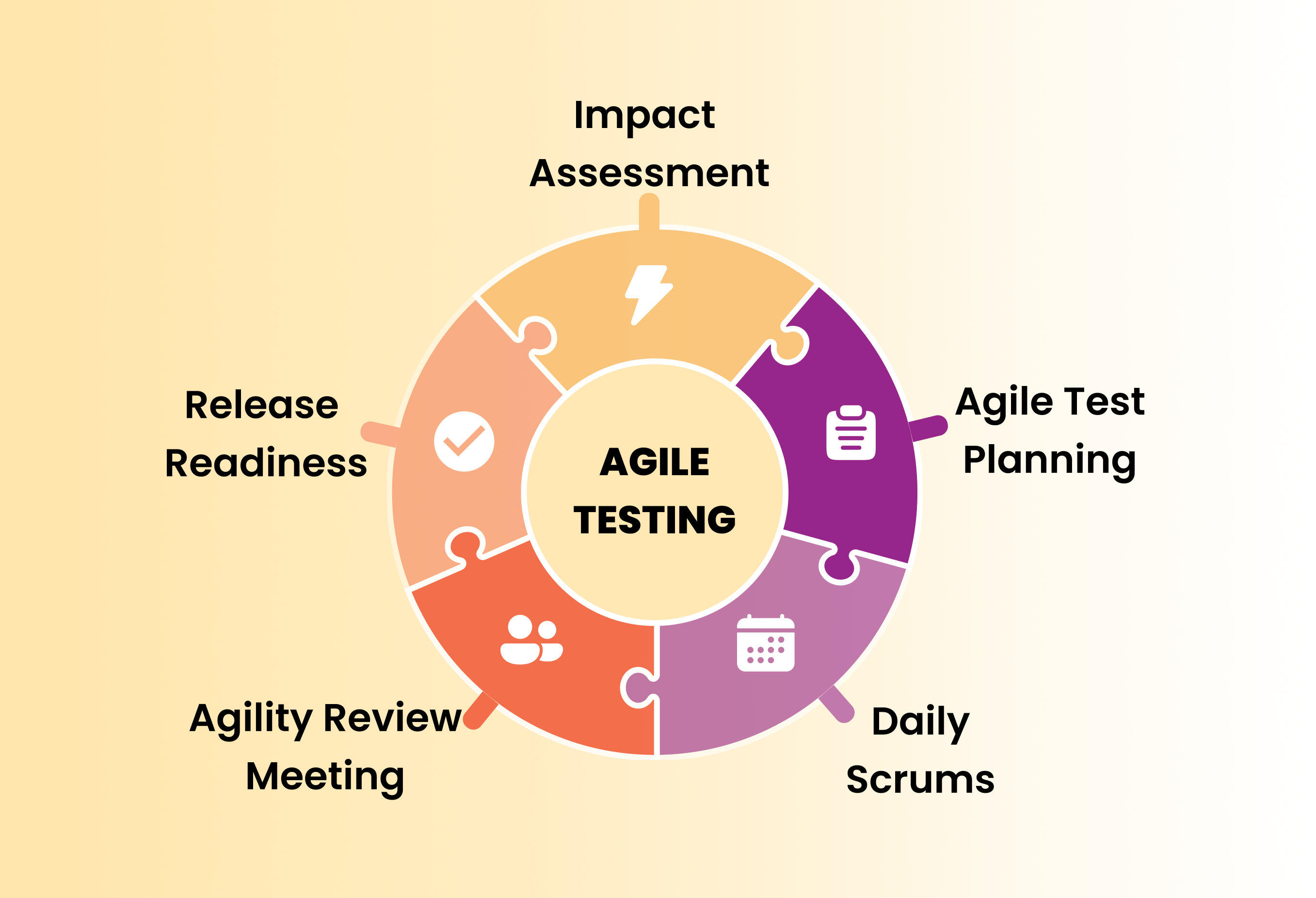How Does Testing the Pyramid Benefit the Agile Team?

When testing suites run, does your software testing team have to wait a long time for results? Is it common for them to have to perform the tests again when they fail? This would mean that their test suites aren’t following the testing pyramid principles.
Particularly in agile teams, software development needs effective testing. When working at a rapid pace, agile teams require testing strategies that can keep up. One method that helps agile teams with software quality assurance is the testing pyramid. It streamlines and improves deployment reliability by integrating continuous integration and delivery. As a result, agile teams are able to consistently produce high-quality software.
What is a testing pyramid?
If quality assurance teams and developers want to create software that everyone can use, the testing pyramid is a beneficial place to start. Developers may quickly write robust test cases and find out how updates impact their code by following them.
The testing pyramid, as its name implies, is a framework for describing the necessary components of an automated test suite for quality assurance and development teams. Additionally, it clarifies the sequence and regularity of these examinations. So, what’s the big picture? Making sure that code changes don’t break current functionality and giving quick feedback are the two key objectives.

Visit our blog for similar posts.
The Testing Automation Pyramid: Its Levels
You must differentiate between various kinds of tests in your codebase. Have you ever thought about why? The test automation pyramid has several tiers, so let’s examine them one by one. It functions on three distinct levels:
1. Unit Tests
Unit tests are the foundational unit of any testing framework. The purpose of these tests is to verify that each individual code snippet performs as expected. They don’t depend on external dependencies and examine every variable.
Because of their consistency and speed, unit tests are useful at every stage of a project’s development. They aid in the early detection and correction of defects. And this helps developers and testers maintain high-quality code.
2. Integration Tests
Integration tests are in the middle of the stack. They are not as common as unit tests. The goal here is to guarantee that the application’s various components function harmoniously with one another. Connectivity to other systems, databases, APIs, and more are all part of this.
Despite being slower and more complicated than unit tests, these tests are essential for ensuring that all software components are in sync with each other. QA teams do these tests at important points in the development process, like after adding new features or changes.
End-to-end Tests
Finally, end-to-end (E2E) testing is at its pinnacle. These tests are the hardest and take the most time. They look at the whole app from the user’s point of view, from beginning to end. User interfaces, application programming interfaces, databases, and other components are all part of end-to-end testing.
In spite of their fragility and reliance on outside influences, these tests are essential for guaranteeing anticipated behavior in real-world situations.

Why is testing the pyramid essential for agile teams?
Maintaining software quality while implementing agile software development’s emphasis on quick and iterative progress is no straightforward feat. That is the function of the software testing hierarchy. As a result, agile teams are better able to strike a balance between speed and quality in their software testing. Using the testing pyramid is essential for agile teams for the following reasons:
1. Identifying bugs early
Built on top of unit tests, the agile testing pyramid aids in the early detection of errors, flaws, and vulnerabilities. If you take care of these little problems on a regular basis, they won’t grow into major ones. The development cycle maintains excellent code quality thanks to early error identification.
2. Save Money
The testing pyramid works well because it finds bugs in the unit tests at an early stage. In an agile setting where resource allocation is paramount, it is essential to fix defects early on since it is quicker and cheaper to do so.
3. Striking a Balance in Testing
The pyramidal structure guarantees that unit, integration, and end-to-end testing are all fairly distributed. This eliminates the possibility of relying too much on a single test type and guarantees a comprehensive review of the whole application.
4. Process Improvement for Quality Assurance
Using the testing pyramid improves QA by covering all bases, from individual components to the whole system. Without omitting or sacrificing any stage, it guarantees that all app components function as expected.
5. Enhanced speed and agility
Consistent with Agile’s emphasis on rapid iteration and adaptability, the testing pyramid is an agile methodology. With the help of E2E testing, rapid feedback from unit tests, and integration testing, development teams can keep up a consistent pace without sacrificing product quality.
6. Integrating CI/CD
By incorporating CI and CD into the agile testing pyramid, QA becomes an automated and essential component of the development process. This allows for agile environments to enable rapid development and deployment cycles.

Challenges in Testing the Pyramid’s Implementation
Although the test automation pyramid is an effective tool for agile software development, it is not without its difficulties in implementation. If teams wish to utilize the pyramid well, they need to be aware of these challenges. These are a few typical difficulties.
- It is not simple to distribute resources like time and tools. Unfortunately, end-to-end (E2E) tests may be resource hogs and even trump unit tests at times.
- It is difficult to keep standards high at all levels. False positives, which occur when test cases are not well-written, lower the efficacy of testing.
- Changes and updates are commonplace in agile projects. For bigger projects in particular, it might be challenging to design and modify test cases to accommodate these modifications.
- Consolidating E2E, integration, and unit testing is not always easy. It takes a lot of time and effort to integrate, since each level demands a distinct strategy and set of tools.
- It is not easy to find an appropriate mix of exams at each level of the pyramid. Inefficiencies arise when teams often seek assistance in calculating the necessary number of exams for each level.
- It takes specialized technical knowledge to put the software testing pyramid into action, especially when it comes to selecting and using testing tools. For groups that aren’t well-equipped technologically, this might be an obstacle.
- Because of the complexity of maintaining and guaranteeing their long-term performance, automating tests at the integration and unit levels is tough.
- The QA approach requires constant vigilance and revisions to ensure its continued efficacy. This may require a lot of resources and put other development efforts at a standstill.
Methods for Efficiently Implementing Testing Pyramids
Agile software development’s strategic implementation of the test automation pyramid calls for best practices. Making sure test cases are efficient, well-structured, and in line with project objectives is what this does. Here’s how we can address this issue:
- All test automation pyramids start with unit tests. Promote test-driven development by encouraging developers to create unit tests as they code.
- Verifying the smooth operation of interdependent parts is the job of integration tests. In addition to catching problems that unit tests fail to detect, they should address all integrations.
- Incorporate and test out any missing components in your test environment with the help of service virtualization. With this, we can build a more comprehensive test case.
- Thorough planning is necessary for end-to-end (E2E) testing due to its complexity. To save time and prevent wasting money on unnecessary testing, concentrate on the user experience and essential features.
- If you want more efficient and accurate QA, automate your tests at the integration and unit levels. Consider your project’s technological stack and the expertise of your team when selecting automation technologies.
- On a regular basis, audit and examine the test cases. Be aware that you prioritize simpler and faster unit tests over sophisticated end-to-end (E2E) tests to keep things in check.
- To stay up-to-date with changes in project scope and technology, it is important to continuously analyze and alter your testing approach.
- It is important that both the development and QA teams be familiar with the testing pyramid and its purpose. As a result, everyone will be able to work together more efficiently.
- Carefully evaluate software functionality without increasing complexity by taking the time to design effective test cases.
- Always monitor the performance of each exam level. Optimize the project for speed and effectiveness to provide value without slowing it down.

Wrapping up
An important part of developing software in an agile fashion is the test automation pyramid. It facilitates effective software development by agile teams. This method revolutionizes quality assurance and makes it ideal for use in agile settings. The advantages of a balanced testing approach, early problem identification, and cost-effectiveness align nicely with the speed and flexibility required by Agile. For dependable and rapid software distribution, the pyramid’s integration with CI/CD procedures is vital.
The software testing pyramid is a useful framework, but it is not without its obstacles. Thorough preparation, technological know-how, and ongoing adjustment are necessary. Nevertheless, by adhering to industry standards, agile teams may overcome these obstacles and make full use of the testing pyramid. Better, quicker, and more dependable software development is what this entails.
